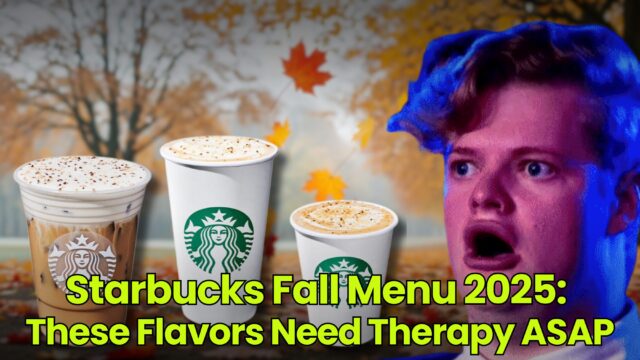The Ultimate Guide for Ecommerce Email Marketing Strategy
Most people consider email marketing to be dead. But did you know about 72% of people prefer emails to promote content? Surprisingly, the role of email marketing in the eCommerce industry has grown to mountain peaks. The email open...

Most people consider email marketing to be dead. But did you know about 72% of people prefer emails to promote content? Surprisingly, the role of email marketing in the eCommerce industry has grown to mountain peaks.
The email open rate has spiked to 21%, especially in this sector. Of these, 2.56% of people are landing on the website, and part of them are making purchases. Cool. Right?
If you think email marketing isn’t working for your business, perhaps you’re doing it incorrectly. E-Commerce email strategy boasts several factors such as campaign goals, killer copy, personalization, timing, and more.
Now, let’s dive deeper into the best email marketing strategies for ecommerce. Read on!
What is Ecommerce Email Marketing?
It’s time to understand email marketing in brief. Email marketing is defined as sending short to long-form commercial emails to a particular segment of people.
To be more specific, a specific message is sent to the potential customer via email. For e-commerce brands, emails are potent weapons to attract, nurture, and convert ideal prospects.
Although email marketing is a true gem, it has been surrounded by colossal myths for over several years. Even today, people consider email marketing to be a waste of time.
Here’re a few eye-openers, even if you’re wondering whether email marketing works or not.
Research shows that powerful email marketing strategies generate about $38 for every $1 spent by the brands. According to McKinsey, the AOV(Aka Average Order Value) is 3X higher than that of paid ads or social media branding tactics. Over 80% of retail businesses are leveraging email campaigns and promotions. Email marketing influences 59% of your customers’ buying decisions.Most significantly, everyone, including you and me, uses email daily. Think about how many times you check your email inbox. MailMunch states that over 99% of your customers look into their email inbox each day.
And by 2023, worldwide email users are expected to hit 4.3 billion. This is the reason the craze for email marketing is growing immensely.
9 Most Important Types Of Ecommerce Emails You Shouldn’t Miss Out On
Businesses craft separate emails based on the purpose or goal of the email.
A few types of emails include Welcome, Loyalty, Re-engagement, Anniversary, Promotional, Post-Purchase, Review or Rating Request, Order Confirmation, Tips/Educational, Cart Abandonment, Price Drop, Back In Stock, Delivery Confirmation, Shopping Notifications, and a lot more.
Let’s discuss a few email types.
Promotional Emails
Each day you perhaps experience a bunch of strategic, less promotional emails. However, promotional emails without a great plan are a big disaster.
The promotional emails should generally be paired with email campaigns to generate huge clicks. Promotional emails’ primary aim is to convert subscribers to customers to the brand’s loyal customers.
Customer Nurturing/Loyalty Emails
Of course, the customer’s trust and loyalty cannot be built in a single night. But a series of emails can make it happen over time. A well-crafted email sent to the target audience twice or thrice a week nurtures your audience.
The side benefits of loyalty email campaigns are they increase the brand’s credibility and customer engagement and enhance the customer lifetime value. Have you ever heard of VIP or premium memberships?
Usually, they’re the most common loyalty programs offered by the brands. These emails ask for customer signups to avail of great deals, offers, and special invitations to various events.
Delivery Emails
Delivery emails are one of the great ways to either boost your customer engagement or increase trust among your ideal prospects.
Once the customer receives the product, ensure to send a quick delivery confirmation message along with the video tutorials or how-to guides. The video length can be as short as 30 seconds to as long as 10 minutes, based on the complexity of product usage.
After that, you can even shoot user-generated content to give a few insights into how others are using the product.
Order Confirmation Emails
An order confirmation email is another powerful weapon in post-purchase email campaigning. Brands leverage order confirmation emails to confirm the order to prevent any further disturbances.
Usually, these emails boast pricing, delivery date, and other relevant details. A few major elements of this email include order number/order tracking ID, delivery date, number of purchased items, return policy, guarantee policy, and other highly recommended items.
Re-Engagement Emails
Although you send emails to each of your email ist, most of them go unnoticed by your ideal prospects. Here’s why experts suggest leveraging re-engagement emails for users who haven’t engaged with your emails.
These emails are specially tailored for a warm audience to get them back on track. The key in re-engagement emails is to personalize more to hit the users’ emotions.
It’s even suggested to use phrases like “It’s been a long time. We’re missing you!”, “We’d love to see you again,” “Please come back (Name of the user),” and a lot more. These messages should let your customer know how much you care for them. So, hit re-engagement emails to make the users feel more special.
Rating or Review Requesting Emails
Testimonials play a crucial role in the eCommerce world. Did you know 4 out of 5 people read reviews before making a buying decision? And over 83% of consumers check for customer reviews before buying a new product.
Ratings or reviews build trust and brand credibility and act as powerful social proof that highly affects the consumers’ purchasing decisions.
This is why the review request emails are crucial to building your brand. The review emails ask for customer opinions about a specific product they bought.
Cart Abandonment Emails
Think about the number of times you added an item to “Add to Cart” and left it without buying. Cart abandonment is one of the most common concerns in the eCommerce industry.
The cart abandonment rate varies from 60% to 80%. One of the coolest ways to cope with cart abandonments is by sending emails to your customers right from the moment they leave the cart.
These emails are highly conversion-oriented and persuasive, moving the customers to make a buying decision. Usually, these are widely used emails in marketing campaigns to improve ROI.
Price Drop Emails
Who wouldn’t love offers and discounts? Almost all eCommerce brands’ success directly relates to price drops. However, one should strategize price drops wisely, analyzing the competitors’ prices and customers’ buying decisions.
Although price drops create quick sales, the brands are highly prone to losses if it isn’t done correctly.
Whenever you’ve price drops, make sure you immediately shoot a few emails to your email list. These emails encourage your loyal customers and convert them. Here’s a quick tip. Shoot the personalized emails for cart abandon users to increase ROI.
Back in Stock Emails
The “out of stock” notification on the products frustrates your customers. Sometimes, the products go out of stock due to huge demand on special occasions like Black Friday deals, Christmas, New Year, Halloween, or other festivals.
Usually, the effect of stock-outs is long-term.
It reduces your sales. Deviates your customer and makes them purchase from the competitors. Ruins customer retention rate.But here’s a way to attract your customers by shooting back-in-stock emails. The back-in-stock emails establish a good rapport, but they also increase your sales in no time.
Here Are Your Key Elements To Build A Killer eCommerce email marketing strategy
Here are a few most important factors to building a killer eCommerce email marketing strategy. These key elements include website conversions, personalized emails, persuasive messages, and an interactive design.
Website Conversions
Email marketing starts with building an email list. But how do you build an email list? Simple. Get good website traffic by creating stellar content and capturing the visitors’ emails. Email marketing makes no sense without a proper email list.
This is the reason website conversions are pretty significant. Make sure you optimize your website, especially the home page, to capture the leads.
A few tips to garner emails include:
Have an email capture form on your website’s home page. Keep the form eye-catchy yet simple. Include testimonials, brand reviews, or ratings to increase signups. Showcase your brand value and USP throughout the website.Personalized Emails
Here comes the second most important factor in email marketing– Personalization. Over 30% of top marketers think personalization plays a crucial role in enhancing the brand’s future. Personalization means a lot more than just including the user’s first name in the subject line of the email. Shoot out the personalized messages into your audience’s inbox to build a great rapport and establish an ultimate brand positioning. A few examples of email personalization include:
Recommending similar products your customers have bought before.Automate emails based on the users’ behavior while shopping. Sending relatable content to particular usersPersuasive Messages
Make sure you send relevant messages to the consumers based on your marketing goals. Each email aims to drive the audience through various sales funnel levels. This is why you should’ve got a strong message to move your audience to take a specific action.
Ensure to use non-spammy words and obey the unsubscribe laws. Add emojis to add emoticons to your copy. Create strong subject lines to spike your open rates. It’s even advised to do a split test to analyze what works best for you.
Interactive Design
Design plays a key role in the online world, including email marketing. So, make sure you use retina-ready and eye-soothing brand colors to attract consumers.
Mobile responsiveness is another most important factor to consider when marketing. Since most users open emails on their mobiles, it’s significant to take care of mobile responsiveness.
The Evergreen Email Marketing Practice– Drip Campaign
Drip campaigns work best whether you’re launching a product or upselling a product. The beauty of this campaign is it works for both B2B and B2C companies.
No matter how well you worked on the product development, launching is one of the most daunting tasks. And it needs to be done in the right way. A perfect drip email campaign for product launching boosts sales and reaps your ultimate results in no time.
There are three parts to the product launch email campaigns.
Pre-launch Launch Post-launchStart your pre-launch series by introducing the problem. Then, show how the problem affects the customer’s life. This is one of the crucial steps in the pre-launch series.
It’s also simply known as agitation. The more you stress the problem, the more your customer focuses on the solution. Finally, make sure you slowly introduce the solution.
Here comes the second stage– The launch. In this, you can introduce the 48-hour challenge or offer a product with offers and its deadline.
The post-launch series should include an email informing the discount for the last time. This is one of the productive ways to boost sales. You can extend these emails to as many as you want based on the conversion rates.
The drip campaigns are powerful tools to enjoy greater conversion rates. This is why these are widely used in the eCommerce industry. So, it’s your time to use highly purposeful and strategic media campaigns to drive sales.
Key Takeaways
Email marketing is one of the best ways to increase conversions. It gives the highest conversion compared to social media or landing pages. All you need to do is make sure of your customer’s data, analyze their behavior, and send personalized emails.
The most important thing to remember in your email marketing is to avoid spam words. Each day people are bombarded with several promotional emails. And most of them are treated as equal to spam emails.
So, make sure you use the best practices and suitable email types to skyrocket your eCommerce brand. You can also check our best e-commerce agencies with great projects directory if you’re looking for one.

 Tfoso
Tfoso 









_2.jpg)

![5 Reasons Why Brands Lose Followers on Instagram [HubSpot Blog Data]](https://blog.hubspot.com/hubfs/losing-followers-on-instagram.jpg#keepProtocol)




















